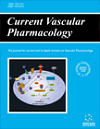
Full text loading...
We use cookies to track usage and preferences.I Understand

This study aimed to evaluate clinical outcomes, including recurrent acute coronary syndrome (ACS) and mortality, in ACS patients with varying HbA1c levels, addressing the controversy over optimal targets in those with newly diagnosed and pre-existing diabetes mellitus (DM).
From January 2005 to December 2019, a total of 33,990 patients were identified with ACS in the Chang Gung Research Database based on their medical history. After excluding patients without DM and baseline or subsequent HbA1C data, a cohort of 11,870 DM patients was divided into two groups: one consisting of 6,089 patients with newly diagnosed DM and the other comprising 5,781 patients with pre-existing DM.
During the three-year follow-up, the pre-existing DM group experienced worse clinical outcomes, such as increased rates of re-ACS, major bleeding, cardiovascular (CV) events, and all-cause mortality. Optimal HbA1c levels for mitigating re-ACS and/or CV mortality and all-cause mortality appeared to differ between the two DM cohorts. Re-ACS and CV mortality reached their highest at an HbA1c of 6.8% for all DM patients, 6.6% for newly diagnosed, and 6.7% for pre-existing cases. The greatest all-cause mortality risk was at an HbA1c of 7.4% for all DM patients, 7.0% in newly diagnosed, and 8.2% in pre-existing patients.
Upon comparing newly diagnosed DM patients with those with pre-existing DM, a poorer prognosis was observed in the latter group, attributed to older age and a higher burden of comorbidities. Throughout the follow-up period, maintaining consistently low HbA1c levels did not reduce the incidence of re-ACS nor enhance survival rates.

Article metrics loading...

Full text loading...
References


Data & Media loading...